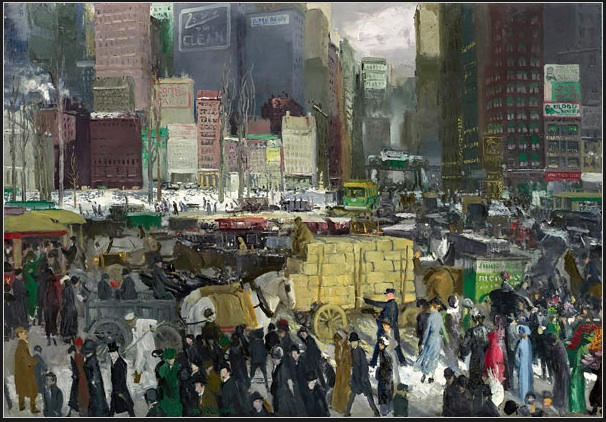Bill Strickland does not play a musical instrument but Dizzy Gillespie called him “one hell of a jazz musician.†Bill is the founder of the Manchester Craftsmen’s Guild, and he has had 40 years of success leading a jazz life without playing a single note. The conversation with Dizzy took place almost 20 years ago. Bill had just taken Dizzy on a tour of the Manchester Craftsmen’s Guild and when Bill looked puzzled, Dizzy explained. “This place is your instrument, man, and everything that happens here is your song.†Bill did not fully understand Dizzy’s meaning at that time, but as the years passed the words took on greater resonance and meaning.
In his new book, MAKE THE IMPOSSIBLE POSSIBLE: One Man’s Crusade to Inspire Others to Dream Bigger and Achieve the Extraordinary by Bill Strickland with Vince Rause (Doubleday/Currency; December 31, 2007; $23.95) Bill shows us that a successful life is not something you simply pursue; it is something you create, moment by moment….just like jazz. He speaks of the power of the arts to connect people from all walks of life and “the transformative power that comes when your work and skill and imagination result in the creation of a beautiful thing,†but his message goes beyond the literal making of music. He defines personal and professional success as “something you assemble from components you discover in your soul and your imagination†and explains life as an ongoing improvisation. “We all need to have the vision and flexibility to react, recover, and keep moving forward every time life hits a snag or throws us an unexpected curve. It is the way we respond to these improvisational demands — embrace them, and use them to further our lives — that defines us as musicians in touch with the melodies and harmonies of life.â€
It was 1986 when the beautiful oasis in one of Pittsburgh’s toughest inner-city neighborhoods was built to house the Manchester Craftsmen’s Guild. In 1987 Bill hired Marty Ashby to head up the jazz program shortly after adding the world-class 350-seat concert hall; the stage of which has been graced by the jazz elite including Dizzy Gillespie, Dr. Billy Taylor, Marian McPartland, Herbie Hancock, Dave Brubeck, Ahmad Jamal, Jim Hall, Max Roach to name just a few. After the first season with rented pianos, it was Ahmad Jamal who accompanied Bill and Marty to the Steinway showroom in New York and personally picked out a 9-ft grand piano for them to buy. And it was in this environment where risks and creativity are nurtured that Pittsburgh-born bassist Ray Brown first conceived and tested his “superbass†program, an evening of music with three bassists — Ray with John Clayton and Christian McBride — and no additional accompaniment, that was later presented in concert halls and clubs around the world.
The MCG Jazz record label has released 20 CDs nationally and internationally and won four Grammy awards out of seven nominations. Today the jazz program, with its $1.2 million annual budget, presents a series of 40 concerts and hosts 20 additional educational activities, including master classes for high school and college musicians and lecture demonstrations for jazz enthusiasts of all ages. But the most exciting program might well be the hosting all 2,300 third graders in the Pittsburgh Public Schools – over three days they are exposed to short performances by local jazz educators, with audience participation components and a child-focused structure that provides a unique and successful formula for a memorable and meaningful introductory jazz music experience.
Bill did not accomplish all of this by himself, but he is the Maestro. He is a three-time Harvard Business School case study, a MacArthur Genius Award winner, has lectured at the Harvard Graduate School of Education, and has served on the board of the National Endowment for the Arts. Over the last forty years Bill’s improvisations have changed the lives of thousands of disadvantaged urban teens, displaced steel-workers and welfare mothers with his world class arts centers and high level career training programs. Bill’s songs have become “standards†and other leaders across the country have begun to compose their own riffs. Today, similar centers have taken root in Cincinnati, Grand Rapids, and San Francisco with plans already in progress to open additional centers in New Orleans, Philadelphia, Columbus and Cleveland.
Bill’s jazz-based approach to life has been beneficial. As he told the business students at Harvard, “in the process, jazz has enriched the culture of our school, enhanced our reputation, and earned us new allies and a level of recognition that has opened the doors to unexpected opportunities for growth.†But beyond the application of his philosophy to the business world, Bill has a message for all of us: Jazz is a state of mind in which possibilities for innovation and discovery are revealed to you, and you are able to tap into deep reserves of commitment and passion. And by that definition, properly applied, jazz can change the planet.
—
ps. here’s what John had to say about the book:
First as a bassist and then as a personal manager, I have lived a jazz life for the better part of my 95 years, but it was not until I read Bill’s book that I truly understood the influence that jazz has had on my success. I traded my bass for the manager’s desk and have been privileged to work behind the scenes. I never regretted my choices and now I know why. Kudos to Bill who has not only put into words what I have always felt in my heart, but who has laid out a path that others can follow. – John Levy, NEA Jazz Master, manager of Cannonball Adderley, Wes Montgomery, Joe Williams, Nancy Wilson, and many others.




